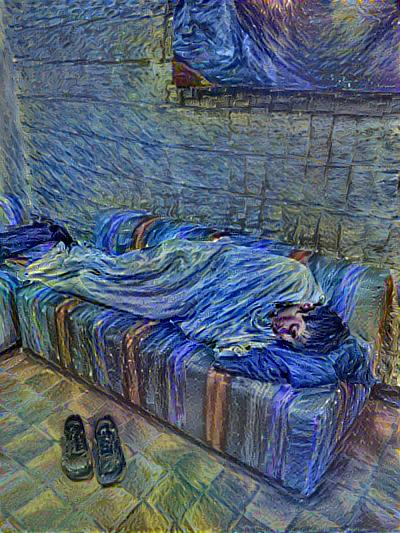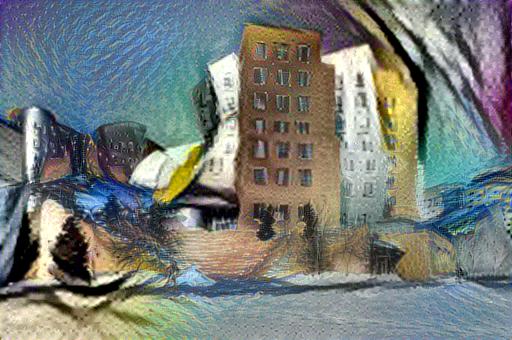An implementation of neural style in TensorFlow.
This implementation is a lot simpler than a lot of the other ones out there, thanks to TensorFlow's really nice API and automatic differentiation.
TensorFlow doesn't support L-BFGS (which is what the original authors used), so we use Adam. This may require a little bit more hyperparameter tuning to get nice results.
See here for an implementation of fast (feed-forward) neural style in TensorFlow.
python neural_style.py --content <content file> --styles <style file> --output <output file>
Run python neural_style.py --help to see a list of all options.
Use --checkpoint-output and --checkpoint-iterations to save checkpoint images.
Use --iterations to change the number of iterations (default 1000). For a 512×512 pixel content file, 1000 iterations take 2.5 minutes on a GeForce GTX Titan X GPU, or 90 minutes on an Intel Core i7-5930K CPU.
Running it for 500-2000 iterations seems to produce nice results. With certain
images or output sizes, you might need some hyperparameter tuning (especially
--content-weight, --style-weight, and --learning-rate).
The following example was run for 1000 iterations to produce the result (with default parameters):
These were the input images used (me sleeping at a hackathon and Starry Night):
The following example demonstrates style blending, and was run for 1000 iterations to produce the result (with style blend weight parameters 0.8 and 0.2):
The content input image was a picture of the Stata Center at MIT:
The style input images were Picasso's "Dora Maar" and Starry Night, with the Picasso image having a style blend weight of 0.8 and Starry Night having a style blend weight of 0.2:
- TensorFlow
- NumPy
- SciPy
- Pillow
- Pre-trained VGG network (MD5
8ee3263992981a1d26e73b3ca028a123) - put it in the top level of this repository, or specify its location using the--networkoption.
Copyright (c) 2015-2016 Anish Athalye. Released under GPLv3. See LICENSE.txt for details.






